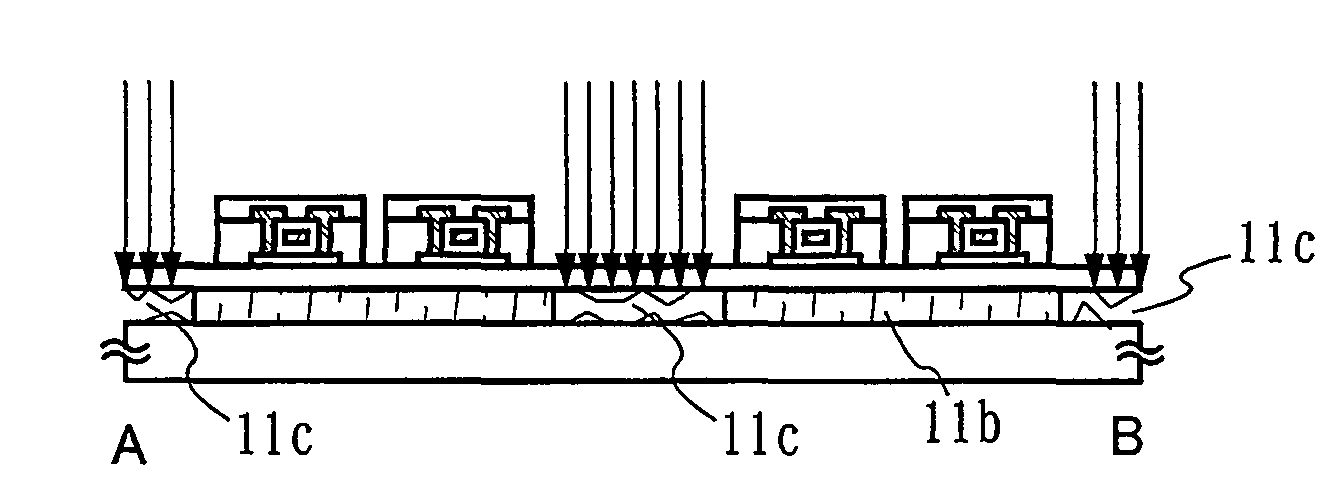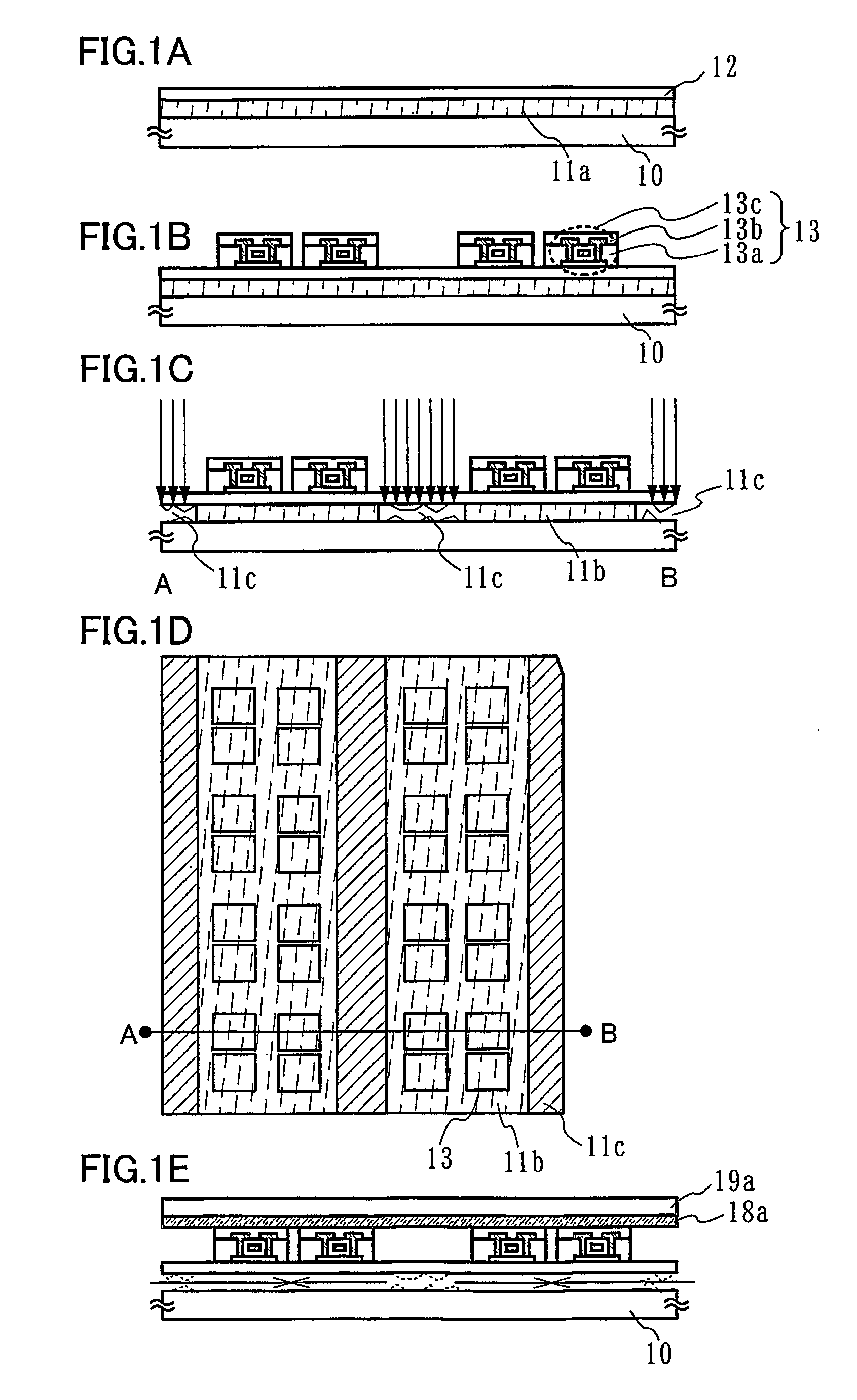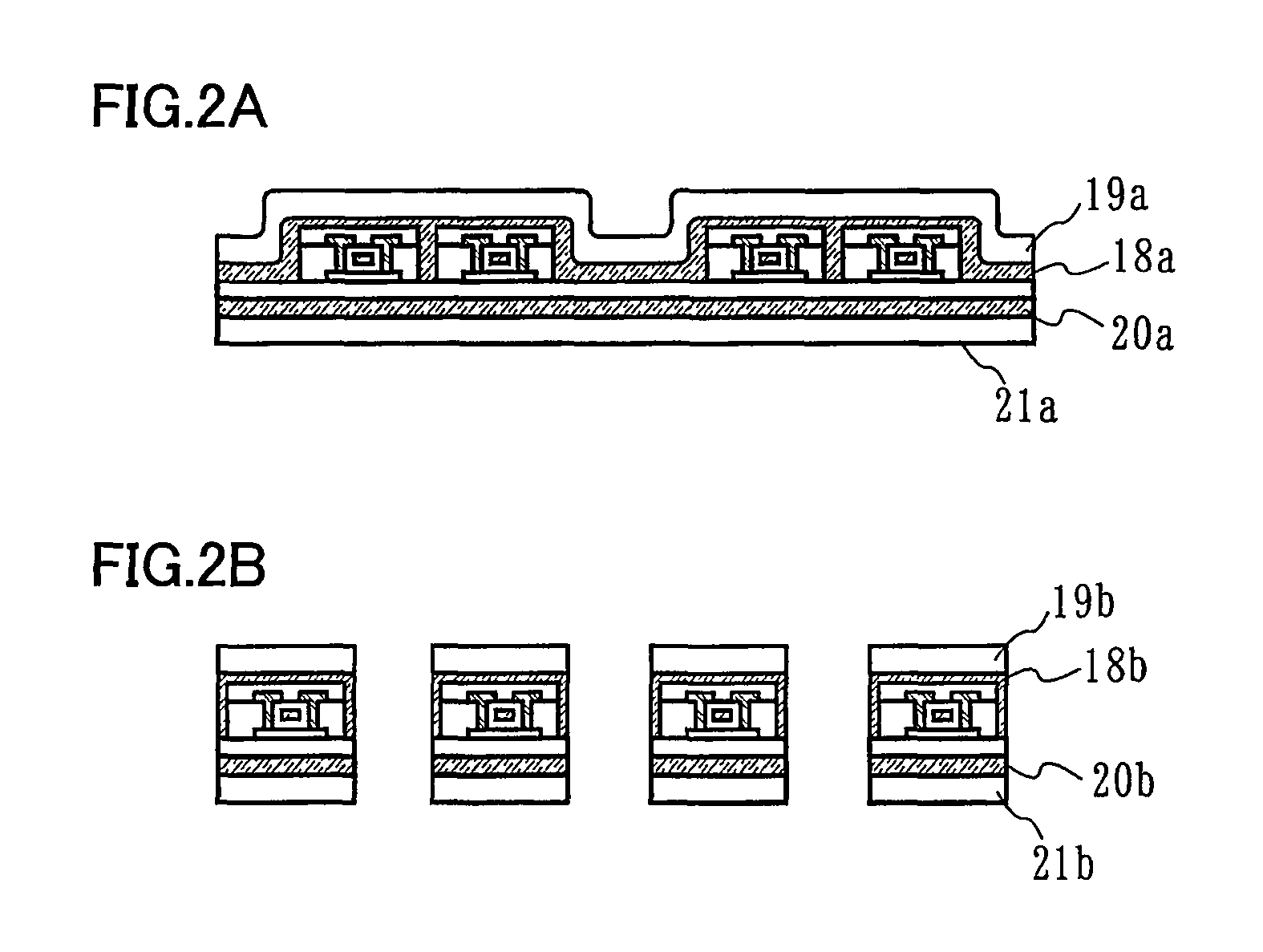Peeling method
a technology of semiconductor devices and peeling methods, which is applied in the direction of semiconductor devices, semiconductor/solid-state device details, electrical apparatus, etc., can solve the problems of unsuitable mass production, cracking of integrated circuits formed by thin films over substrates, etc., and achieve the effect of efficient peeling and easy picking up
- Summary
- Abstract
- Description
- Claims
- Application Information
AI Technical Summary
Benefits of technology
Problems solved by technology
Method used
Image
Examples
embodiment 1
[0085]A method for manufacturing the semiconductor device in accordance with the present invention is explained hereinafter.
[0086]A separating layer 11a is formed over a substrate having an insulating surface 10. A substrate having an insulating surface 10 corresponds to a glass substrate, a quartz substrate, a plastic substrate, a resin substrate made from synthetic resin having flexibility such as acrylic, or a metal substrate. The separating layer 11a is formed by a layer containing silicon by a known method such as a sputtering method or a plasma CVD method. The layer containing silicon corresponds to an amorphous semiconductor layer, a semiamorphous semiconductor layer in which an amorphous state and a crystalline state are mixed, or a crystalline semiconductor layer.
[0087]A base insulating layer 12 is formed by an inorganic insulating film. As the base insulating layer 12, a single layer film made from silicon oxide, silicon nitride, silicon oxynitride, silicon nitride oxide, ...
embodiment 2
[0103]A manufacturing method which is different from that described in Embodiment 1 is explained with reference to FIGS. 4A to 5B.
[0104]A separating layer 411a is formed over the whole surface of a substrate having an insulating surface 410. Here, a tungsten (W) film obtained by a sputtering method is used as the separating layer. Then, a base insulating layer 412a is formed by an inorganic insulating film (refer to FIG. 4A). As a material for the base insulating layer 412a, a material which hardly reacts or does not react chemically with gas or liquid containing fluorine halide used in the subsequent process is preferably used. The base insulating layer 412a is preferably formed by a laminated layer of silicon oxide film or a silicon nitride film. Here, a silicon nitride film is stacked over a silicon oxide film which is in contact with the tungsten film.
[0105]A layer to be peeled 413 using a base insulating film 412a as a base film is formed. The layer to be peeled including a fir...
embodiment 3
[0129]An example of manufacturing apparatus for a thin film integrated circuit is explained in this embodiment.
[0130]FIG. 6A shows manufacturing apparatus which arches the device by means of laminating in accordance with Embodiment 1.
[0131]The manufacturing apparatus shown in FIG. 6A has a delivery roller for a film 1401, a take-up roller for a film 1402, transporting rollers 1403, 1404, a substrate carrier arm 1409, and rollers 1410, 1411.
[0132]In accordance with Embodiment 1, the state shown in FIG. 1E is obtained, and a first film 19a is held by the substrate carrier arm 1409 with a vacuum chuck. Like components are denoted by like numerals as of Embodiment 1. The first film 19a is provided with a first adhesion layer 18a. A layer including an antenna 1408 is adhered to a layer including a TFT 1407 by the first adhesion layer 18a.
[0133]The first film 19a is simply mounted over the laminate film by lightly pressing the first film 19a at the laminated film which is delivered from ...
PUM
 Login to View More
Login to View More Abstract
Description
Claims
Application Information
 Login to View More
Login to View More - R&D
- Intellectual Property
- Life Sciences
- Materials
- Tech Scout
- Unparalleled Data Quality
- Higher Quality Content
- 60% Fewer Hallucinations
Browse by: Latest US Patents, China's latest patents, Technical Efficacy Thesaurus, Application Domain, Technology Topic, Popular Technical Reports.
© 2025 PatSnap. All rights reserved.Legal|Privacy policy|Modern Slavery Act Transparency Statement|Sitemap|About US| Contact US: help@patsnap.com



